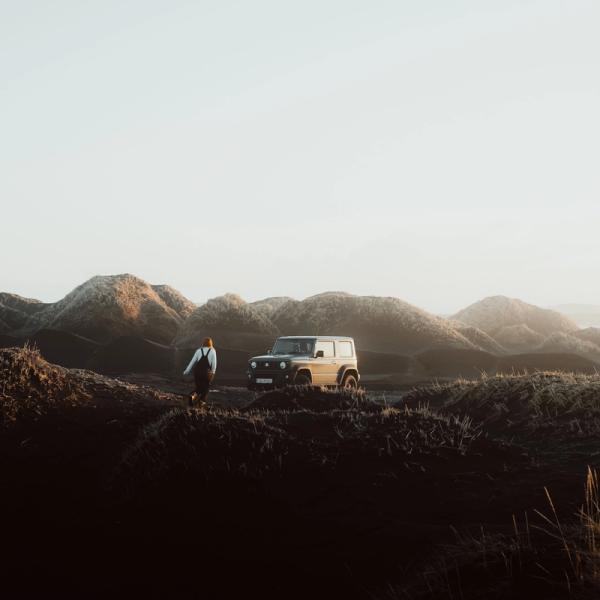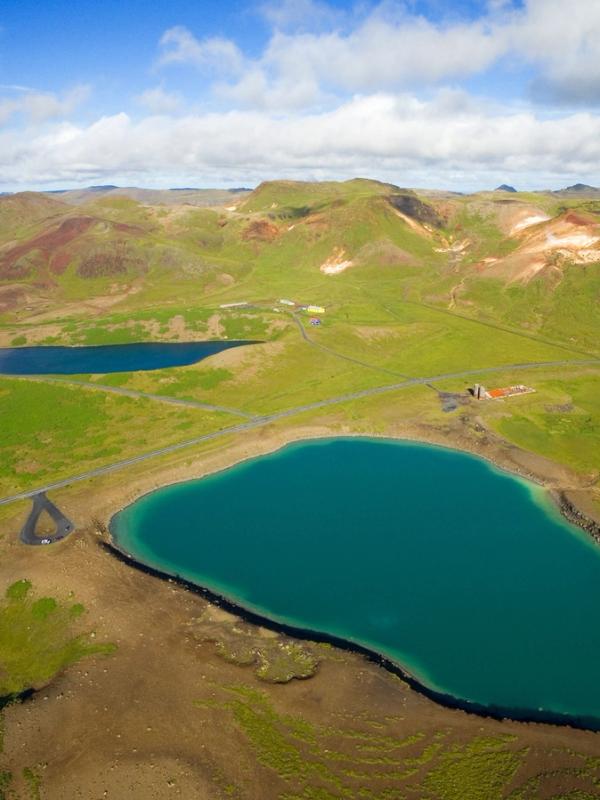
The Southwestern Tip of Iceland: Reykjanes Peninsula
When people think of Iceland, they often imagine spectacular landscapes that can’t be found anywhere else in the world. And there’s a corner of the country that displays some of the best geological features that have made Iceland famous in the world: The Reykjanes Peninsula. Located in the southwest, this rugged, volcanic stretch of land is sometimes overlooked by visitors who come to Iceland, as they rush to other places like Reykjavik or the Golden Circle. However, this region has some of the best things to see and do in the entire island.
The peninsula is home to some of Iceland’s most iconic sights, like the famous Blue Lagoon, bubbling geothermal areas, and the recently erupted Fagradalsfjall volcano. Reykjanes combines amazing natural monuments and Iceland’s cultural heritage with fishing villages, lighthouses, and museums.
For those seeking adventure, the hiking trails and lava fields provide endless opportunities for exploration. And there’s no better way to end a day of adventures than relaxing in one of the geothermal baths here.
This guide will take you through everything you need to know to make the most of your visit to this great corner of Iceland.
Key Takeaways
- The Reykjanes Peninsula, also known as the Southern Peninsula (Suðurnes in Icelandic), is one of the eight regions that make up Iceland.
- The main airport in the country, Keflavík, is located in this region.
- The Reykjanes Peninsula is home to the Blue Lagoon, perhaps the most famous geothermal baths in Iceland.
Why is Reykjanes Peninsula Worth a Visit?
Reykjanes Peninsula offers a unique mix of dramatic landscapes, geothermal activity, and cultural landmarks that make it one of Iceland’s most fascinating regions. It’s a place with vast lava fields that stretch out as far as the eye can see, dotted with steaming hot springs and mud pools. The peninsula is surrounded by the North Atlantic Ocean, and it has a strong connection with the sea.
However, the most recognizable feature of the Reykjanes Peninsula is its volcanic origin, which is ever-present. Here, you can find active geothermal areas and lava formations that date back to centuries of eruptions. In fact, the word "Reykjanes" can be translated as “Smoky Peninsula,” a name that perfectly encapsulates the area’s geothermal nature. The “smoke” refers to the steam rising from the countless hot springs and fumaroles scattered across the landscape.
What makes Reykjanes even more appealing is its accessibility. Keflavík International Airport, Iceland’s main airport, is located on the peninsula, making it the first piece of Iceland most travelers see. And it’s also really close to the country’s capital, Reykjavik. But instead of just passing through, you should consider staying a while.
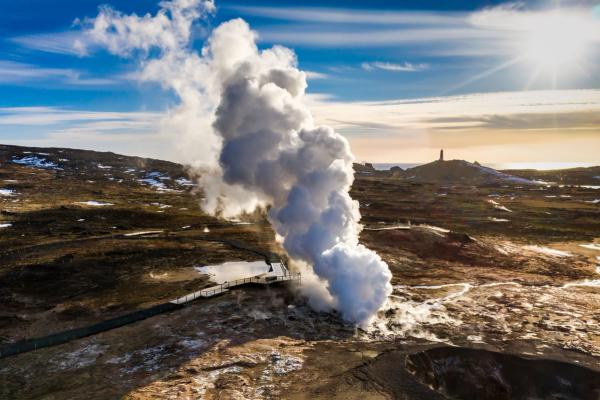
What to see in Reykjanes Peninsula
As mentioned, the Reykjanes Peninsula is not short of things to see. Here are some of the best.
The Blue Lagoon
No visit to Reykjanes would be complete without a trip to the Blue Lagoon. Located in the middle of a black lava field, this world-famous geothermal spa is known for its milky-blue waters, which are rich in silica and other minerals that are said to have healing properties. Visitors can take a relaxing and beneficial bath here, surrounded by a surreal volcanic landscape. The spa also offers other amenities like massages, saunas, and fine dining at its Lava Restaurant. It’s an experience that definitely should be on your Iceland bucket list.
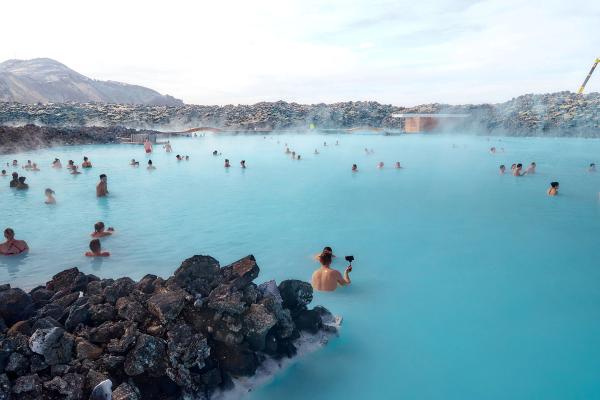
Gunnuhver Geothermal Area
Gunnuhver is one of the places in Iceland where geothermal activity can be seen the best. The area is filled with hot springs, boiling mud pools, and steaming vents, creating a unique atmosphere. The largest mud pool in Iceland is here, with over 20 meters in diameter. Some boardwalks allow visitors to get up close to the geothermal activity while staying safe. The legends tell the story of Gunna, a woman who died in the area centuries ago and whose ghost was trapped in the springs, giving the place its name.

Reykjanesviti Lighthouse
Perched on a hill overlooking the coastline, Reykjanesviti is Iceland’s oldest lighthouse. It was built in 1907, serving as a beacon for ships navigating the difficult waters of the North Atlantic. It’s located in the southwesternmost point of the country, not far from Gunnuhver. The area around the lighthouse offers breathtaking views of the crashing waves and surrounding volcanic landscape. Nearby, you’ll find Valahnúkamöl, where the waves crash against jagged rocks, creating a great view.
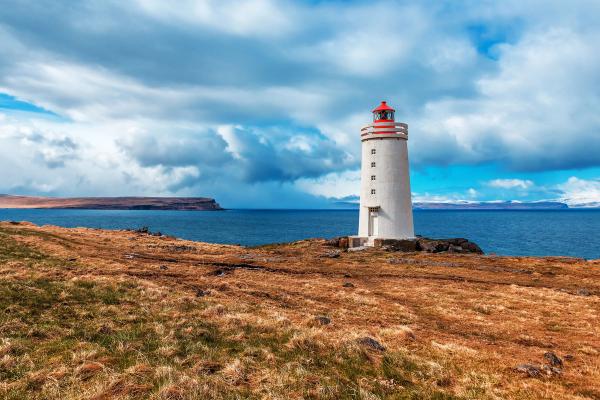
Bridge Between Continents
The Reykjanes Peninsula sits on the boundary between the Eurasian and North American tectonic plates. This means that the peninsula, and Iceland in general, is technically on two continents. The Bridge Between Continents is a symbolic footbridge spanning a fissure caused by these drifting plates. Walking across it is a surreal experience—you can literally stand with one foot on each continent. There are also information panels explaining the geological importance of this place, adding an educational element to your visit.
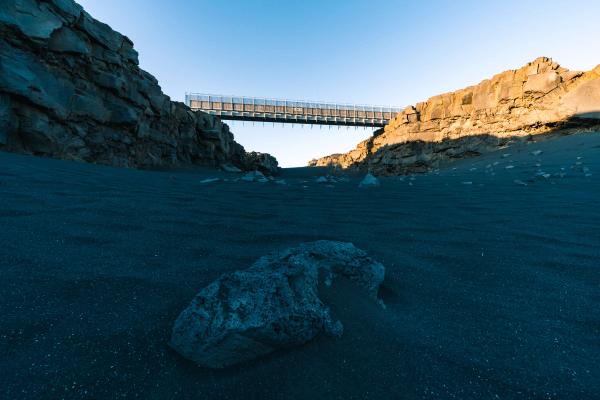
Fagradalsfjall Volcano
Fagradalsfjall became famous worldwide during its 2021 eruption, drawing thousands of visitors to witness the lava flowing from up close. Today, the cooled lava fields are a popular hiking destination. There are several trails here that lead to observation points from where you can see the aftermath of the eruption. It’s a humbling reminder of the forces that shape our planet.
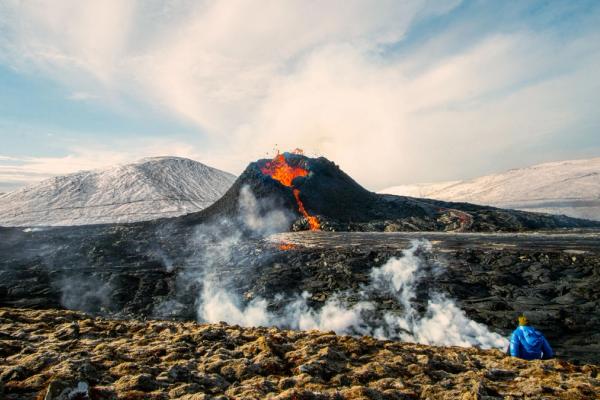
Brímketill Lava Rock Pool
Brímketill is a natural lava rock pool on the coastline of the Reykjanes Peninsula. Carved over centuries by the relentless ocean waves, Brímketill translates to "White Cauldron," a fitting name for this striking formation. The pool looks really good and swimming here may be tempting, but it’s not advised due to the dangerous Atlantic waves crashing against the rocks. Instead, visitors can enjoy the view from a secure observation deck. On stormy days, the sight of waves crashing into Brímketill is truly impressive, making it a must-see for nature lovers and photographers alike.

Lake Kleifarvatn
This lake is one of Iceland’s hidden gems. The lake is surrounded by volcanic hills that create a unique surrounding. It’s known for its fluctuating water levels. Kleifarvatn also has its own legend, as the locals tell the story of a monster that lives in the water. It’s a peaceful spot for a picnic or a leisurely hike, offering stunning views of the surrounding area.
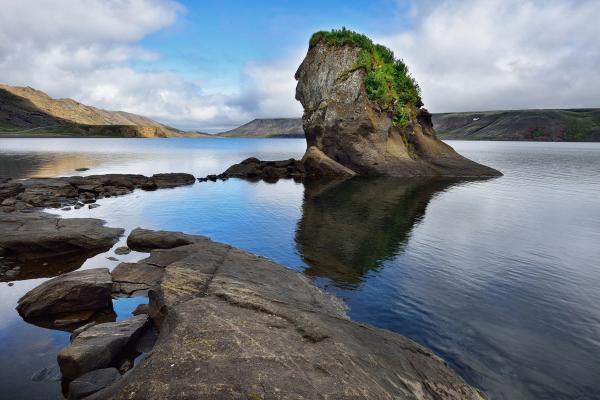
Cities in the Reykjanes Peninsula
The Reykjanes Peninsula is dotted with small towns and cities that offer a mix of modern conveniences, cultural experiences, and authentic Icelandic charm. Two of the most notable are Keflavík and Grindavík.
Keflavík
Located near the international airport with the same name, Keflavik is sometimes the first glimpse visitors get of Iceland. Not many travelers take time to explore the city, as they usually rush to other parts of the country, but it has unique attractions worth exploring. The harbor is a pleasant spot for a walk, with many fishing boats coming and going. The city is a convenient base for exploring the peninsula, with hotels, restaurants, and shops.
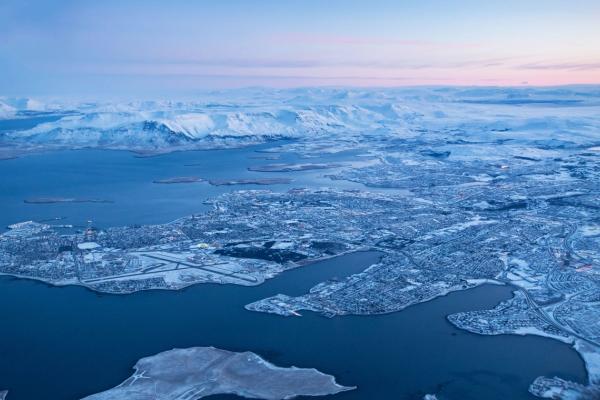
Grindavík
Grindavík is a small fishing town on the southern coast of Reykjanes, very close to the Blue Lagoon. The surrounding volcanic landscapes create a stunning backdrop to this peaceful village. The town is also a great starting point for hiking trails, geothermal excursions, and visits to nearby attractions like Brímketill and Gunnuhver.
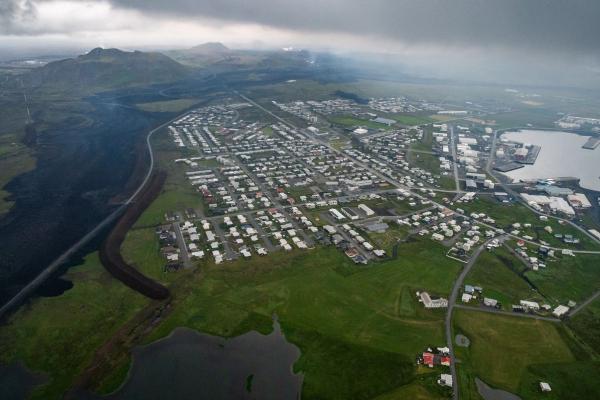
What to do in Reykjanes Peninsula
Reykjanes is a great place for those wanting to interact proactively with Iceland's nature instead of just being passive witnesses. Here are some of the best things to do in the area.
Take a Bath in Geothermal Waters
Reykjanes Peninsula is a paradise for visitors wanting to discover geothermal places in Iceland. Soaking in naturally heated waters is one of the most relaxing ways to connect with Iceland’s unique landscape. The Blue Lagoon, as we explained before, is a luxurious geothermal spa in the middle of a lava field.
If you are looking for a less crowded option, the Reykjanes Thermal Pools are smaller and less developed, but they provide a quiet and nice place to enjoy a soak without being surrounded by too many people. Remember, many natural pools lack facilities, so plan accordingly.
Soaking in geothermal waters is not just a recreational activity—it’s a cultural experience. Icelanders use these natural spas as places to relax and socialize, making it a perfect opportunity to connect with local traditions.
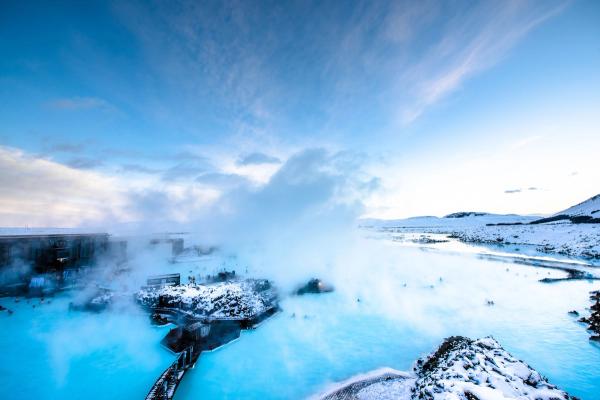
Hike volcanic trails
Hiking on the Reykjanes Peninsula is a journey into a landscape shaped by the incredible forces of our planet. The region is full of trails that lead to volcanic craters, rugged coastlines, and steaming geothermal fields. Whether you’re an experienced hiker or a casual walker, there’s a trail to suit every skill level.
One of the most iconic hikes is to the summit of Mount Keilir, a cone-shaped volcano. Formed during a subglacial eruption, its symmetrical shape is quite iconic. The trail is moderately challenging, with rocky parts and steep climbs, but rewards you with panoramic views of the peninsula’s lava fields, mountains, and coastline. On clear days, you can even see Reykjavík in the distance.
Apart from Fagradalsfjall Volcano, which we mentioned before, if you’re looking for shorter walks, trails around the Krýsuvík Geothermal Area offer colorful landscapes of bubbling mud pots. These trails are accessible and provide an up-close view of geothermal activity. Always stick to marked paths, as the ground can be unstable near the vents.
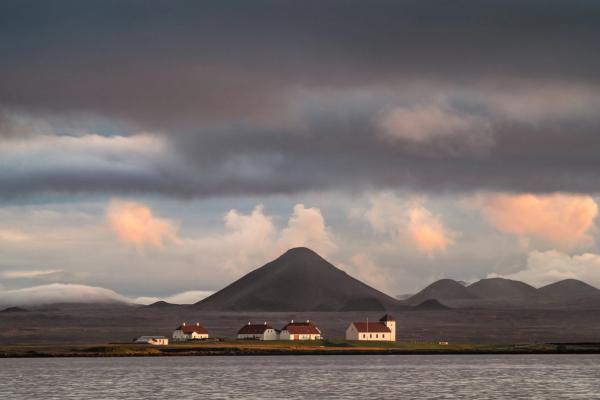
Explore lava caves
Getting inside a lava cave is a thrilling way to dive deeper into Iceland’s volcanic history. The Reykjanes Peninsula is home to several lava tubes formed during ancient eruptions when molten lava flowed beneath the surface and left behind hollow tunnels.
One of the most accessible and popular caves is Leiðarendi, located near the town of Hafnarfjörður. The name translates to "The End of the Road," but for visitors, it’s just the beginning of an unforgettable journey. This 900-meter-long lava tube has fascinating rock formations, stalactites, and colorful mineral deposits.
Guided tours are recommended for safety and to learn about the cave’s history and formation. During winter, parts of the cave may be covered in ice, which adds a different side to the already exciting experience. Make sure to wear sturdy shoes, warm clothing, and a helmet with a flashlight, as the cave’s uneven terrain and low ceilings require careful navigation.
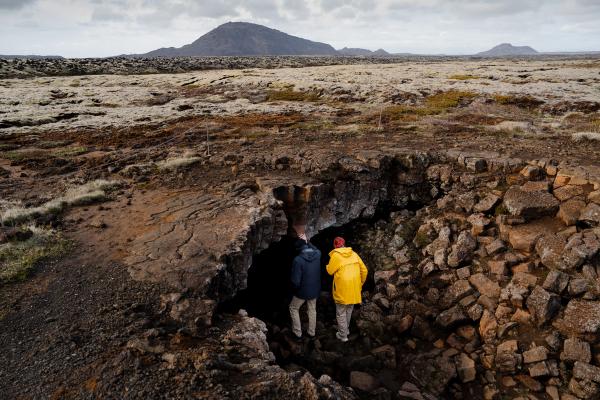
Bird Watching
The rugged cliffs and coastal areas of Reykjanes Peninsula are a haven for bird enthusiasts. Many species live in the region, including puffins, guillemots, kittiwakes, and many others, making it a prime bird-watching destination.
One of the best spots for birdwatching is Krísuvíkurberg Cliffs, a stretch of coastline where thousands of seabirds nest. Spring and early summer are the best times for birdwatching, as many species return to the peninsula to breed. The towering cliffs provide a safe place for these birds, and the sheer number of them is an incredible sight. Watching puffins is one of the reasons why many visitors come to Iceland. Make sure to bring binoculars and a camera to capture the action.
In addition to the cliffs, the coastal wetlands and lava fields of Reykjanes are home to a variety of bird species. The area around Garður and its historic lighthouses offers opportunities to spot migratory birds that use Iceland as a seasonal stopover. Tread lightly and respect nesting areas, as these ecosystems are fragile.
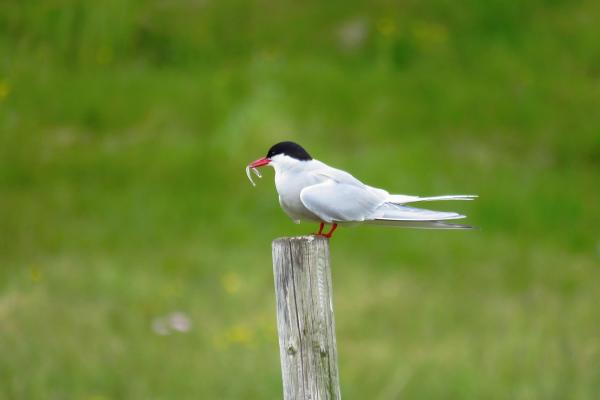
Icelandic Museum of Rock 'n' Roll
Music lovers will find a hidden gem in the Icelandic Museum of Rock 'n' Roll, located in Keflavík. This modern museum takes you through the history of Icelandic music, from early folk traditions to the international success of bands like Sigur Rós and artists like Björk. Interactive exhibits allow you to listen to music, create your own tracks in the sound booth, and learn about the evolution of Iceland's music scene.
The museum is a fun stop for families, music enthusiasts, and anyone curious about Iceland’s cultural identity. It’s a chance to see how this small nation has made such a big impact on the global music stage.

Viking World Museum
Another great cultural stop in your journey through Iceland. In this museum, located near Keflavík, you can learn about Iceland’s Viking heritage. The highlight of this museum is Íslendingur, a full-scale replica of a Viking ship built using traditional methods. Visitors can board the ship and imagine what life was like for the fearless explorers who sailed the North Atlantic hundreds of years ago. The museum also features great exhibits on Viking mythology, daily life, and their global influence.
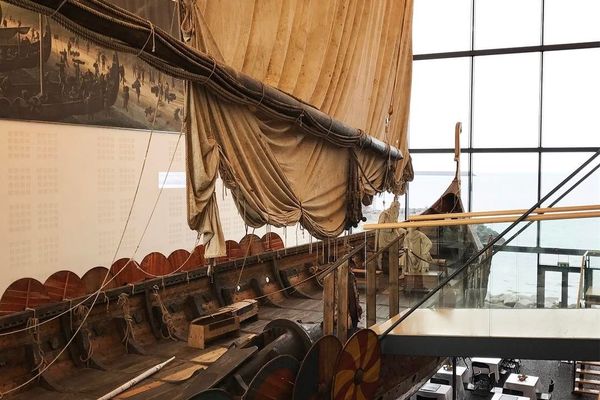
What’s the Weather Like in Reykjanes Peninsula?
The weather in Reykjanes Peninsula, like in the whole of Iceland, is unpredictable and can change at a moment’s notice. This area is surrounded by the sea, so it’s not as cold as the central regions of the country, but it’s more exposed to wind and rain.
Spring (April and May)
Spring in Reykjanes marks the transition from the long and cold winter to longer, brighter days. Temperatures range from 4°C to 10°C (39°F to 50°F). While the weather can still be unpredictable, the landscape begins to bloom with mosses and wildflowers. It’s a great time for hiking, though waterproof gear is essential as rain showers are common.
Summer (June to August)
This season brings mild weather, with temperatures averaging 10°C to 15°C (50°F to 59°F). The daylight hours are very long, with almost 24 hours of daylight by the end of June. For this reason, it’s the best time for outdoor activities like hiking and exploring volcanic craters. The lush green moss covering the lava fields adds a vibrant touch to the landscape. However, summer can still bring wind and occasional rain, so pack accordingly. It’s also peak season, so expect busier attractions.
Autumn (September and October)
As it happens with spring, autumn is also a transitional period. The temperatures drop, usually moving between 2°C to 10°C (36°F to 50°F), and the days get shorter every week. On the other hand, autumn transforms Reykjanes into a colorful wonderland as moss and vegetation turn shades of orange and red. This season offers a quieter experience, with fewer crowds and the first chance to see the Northern Lights dancing across the night sky.
Winter (November to March)
Winters in Reykjanes are long and cold, with temperatures ranging from -2°C to 4°C (28°F to 39°F). Snow covers the landscape, creating a magical atmosphere, especially around geothermal areas. Although the days are short, the long nights are perfect for seeing the Northern Lights. Roads can be icy, so travelers should prepare for challenging driving conditions.
| Season | Temperature in ºF | Temperature in ºC |
| Spring (April and May) | 39°F to 50°F | 4°C to 10°C |
| Summer (June to August) | 4°C to 10°C | 10°C to 15°C |
| Autumn (September and October) | 36°F to 50°F | 2°C to 10°C |
| Winter (November to March) | 28°F to 39°F | -2°C to 4°C |
Travel Tips
- Dress in layers: Iceland’s weather is famously unpredictable, so layers are crucial for adjusting to changing temperatures.
- Waterproof gear: Rain and wind are common, so a good waterproof jacket, pants, and shoes are highly recommended, almost compulsory.
- Bring a camera: The landscapes in this region are photogenic all year-round, so bring a camera or a smartphone with good storage.
- Snacks and water: While there are towns with restaurants, many attractions are a bit remote, so take food and water on longer excursions.
- Rent a car: This is the best way to explore the peninsula, and Iceland in general, is to have your own car. If you are going to visit in winter, consider a 4x4 vehicle.
- Fuel up: Gas stations are limited in some areas, especially away from major cities, so fill up the tank whenever possible.
- Stay overnight: While Reykjavík is close, staying on the peninsula allows for more relaxed exploration and better chances to catch the Northern Lights in winter. Choose from guesthouses, hotels, or cottages near Keflavík or in smaller villages like Grindavík.
- Check the weather forecast and the road conditions: As the weather changes so much, it’s a good idea to check the forecast before starting your day. It can affect road conditions as well, so look them up to avoid unpleasant surprises.
- Respect nature: Iceland’s ecosystems can be fragile, so stick to marked trails and avoid disturbing the wildlife.
- Be careful in geothermal areas: These are stunning but can be hazardous. Follow the signs, and don’t venture alone if you don’t know the area.
Conclusion
The Reykjanes Peninsula is a land of contrasts and wonders, offering a taste of many of the things that make Iceland extraordinary. From the steaming geothermal fields to the serene lakes, from the rugged volcanic trails to the luxurious Blue Lagoon, this region is as diverse as it is captivating. Whether you’re a first-time visitor or a seasoned traveler, Reykjanes promises unforgettable experiences.

